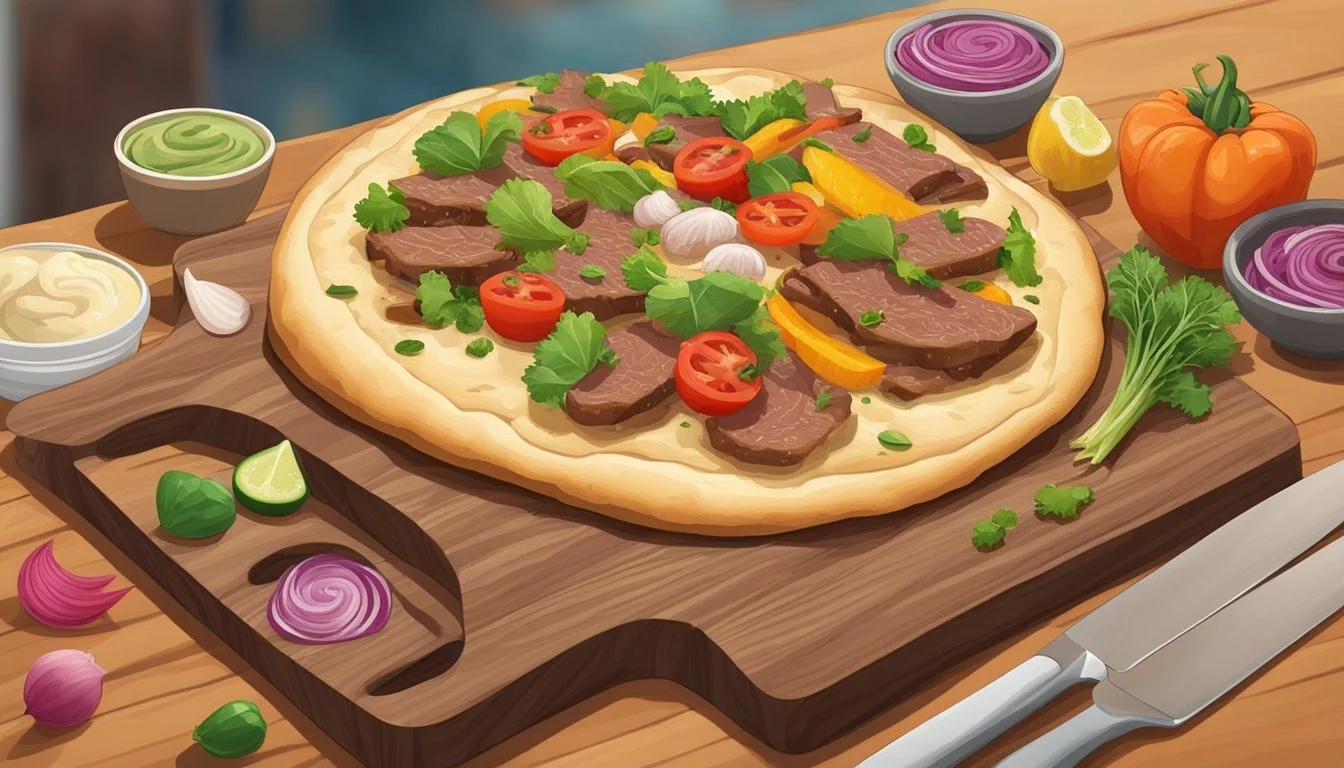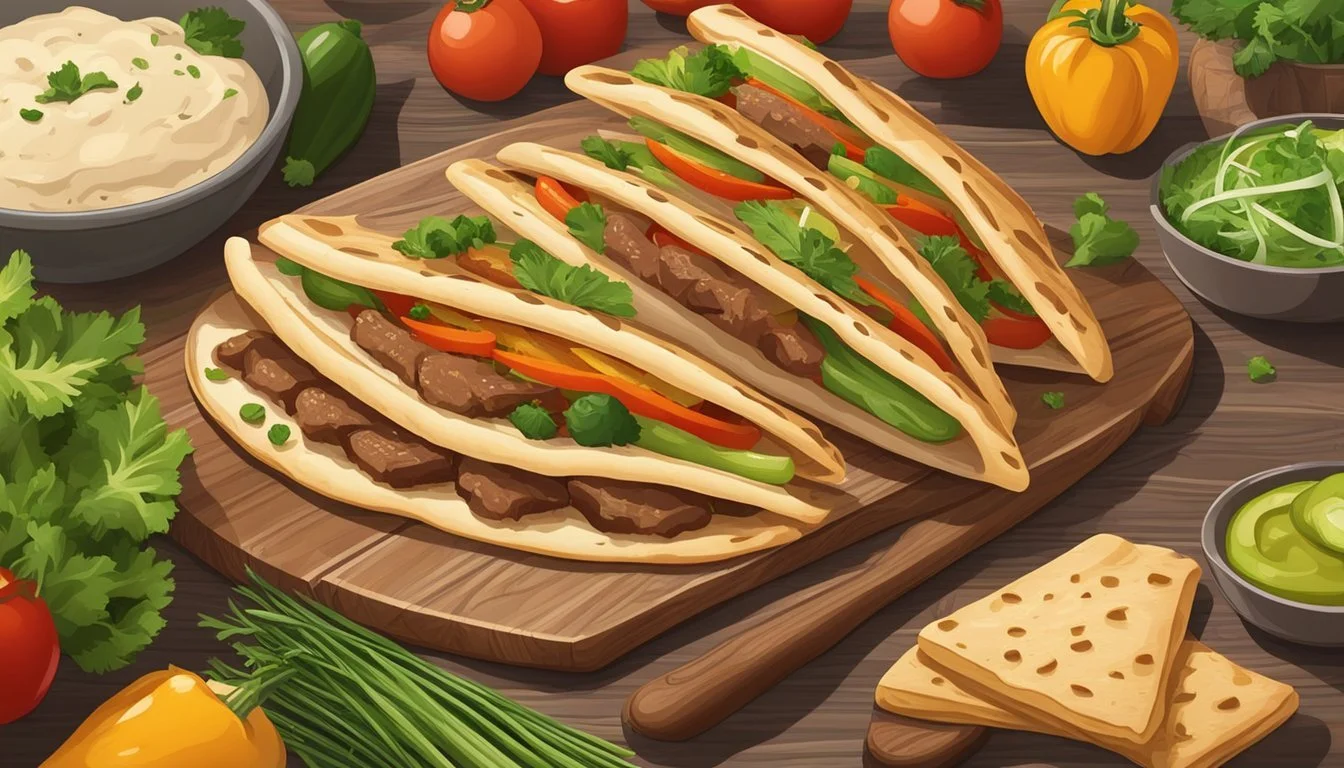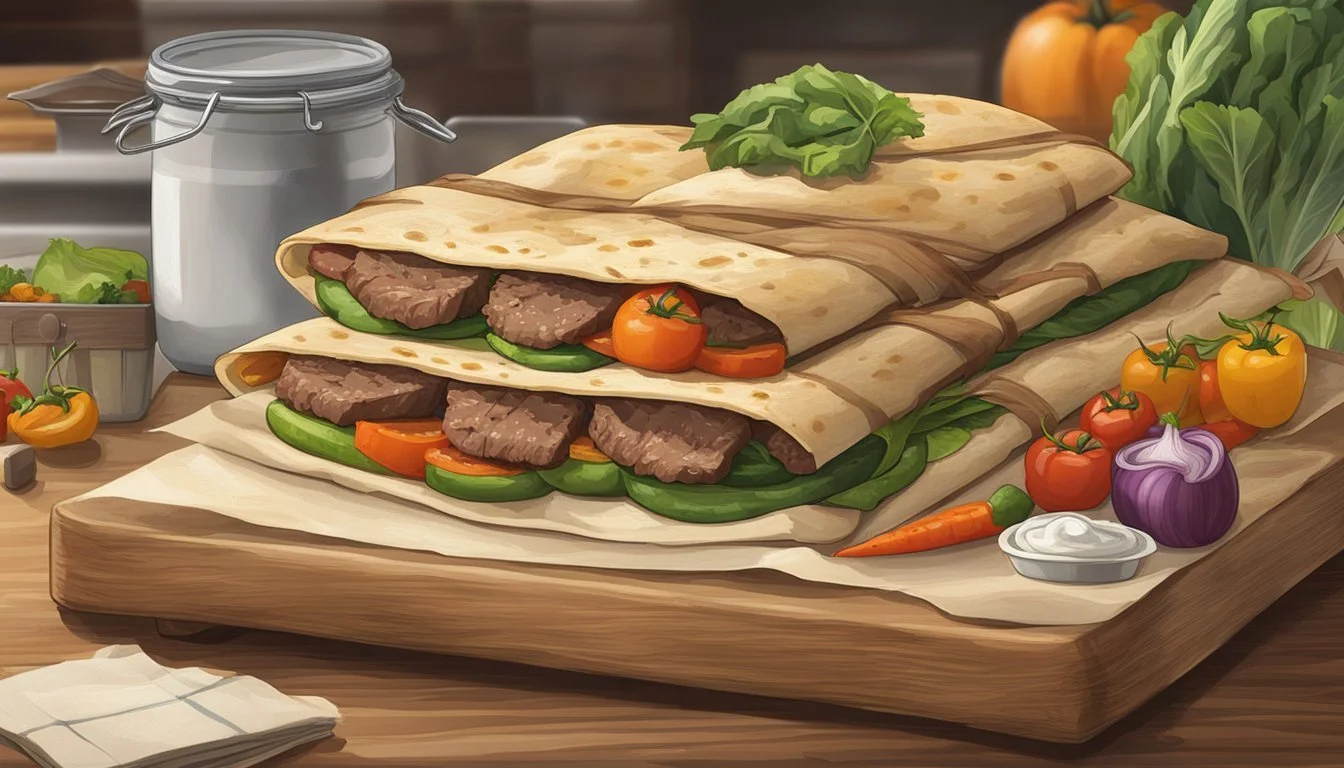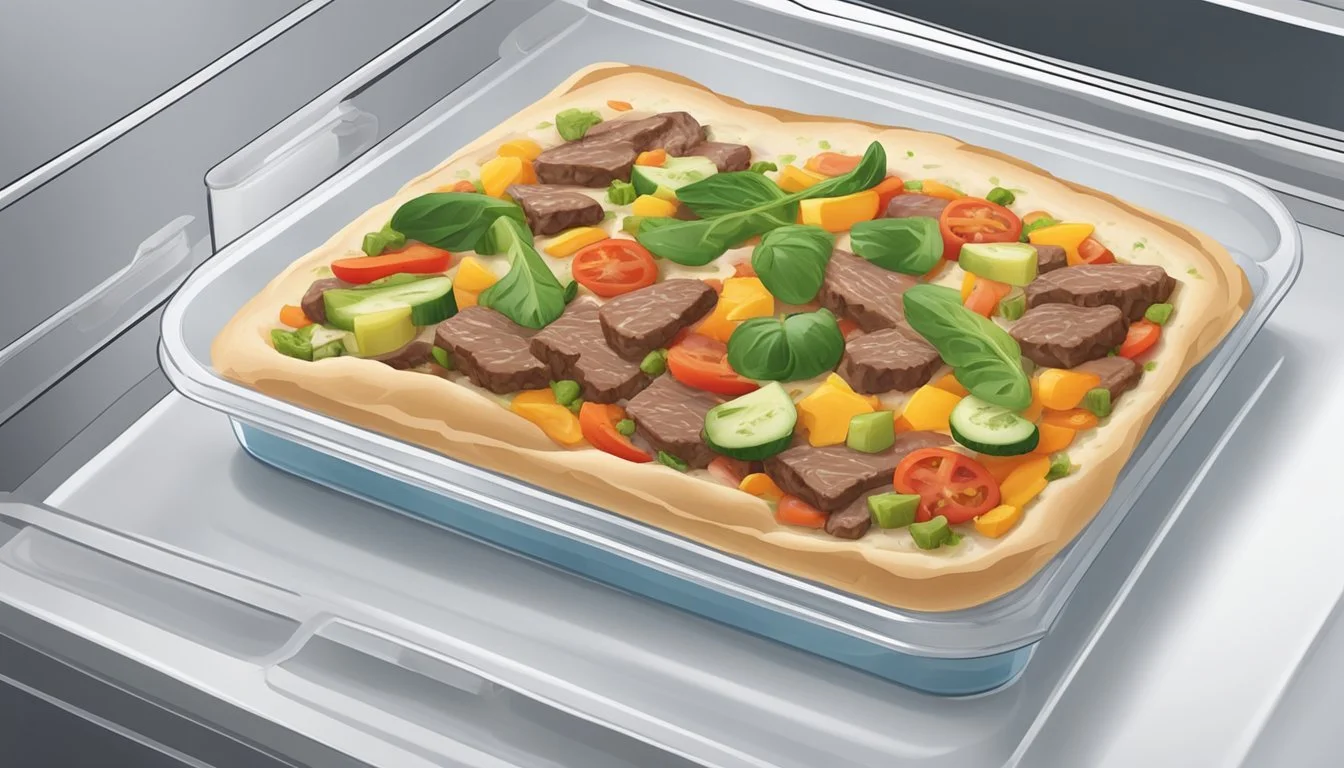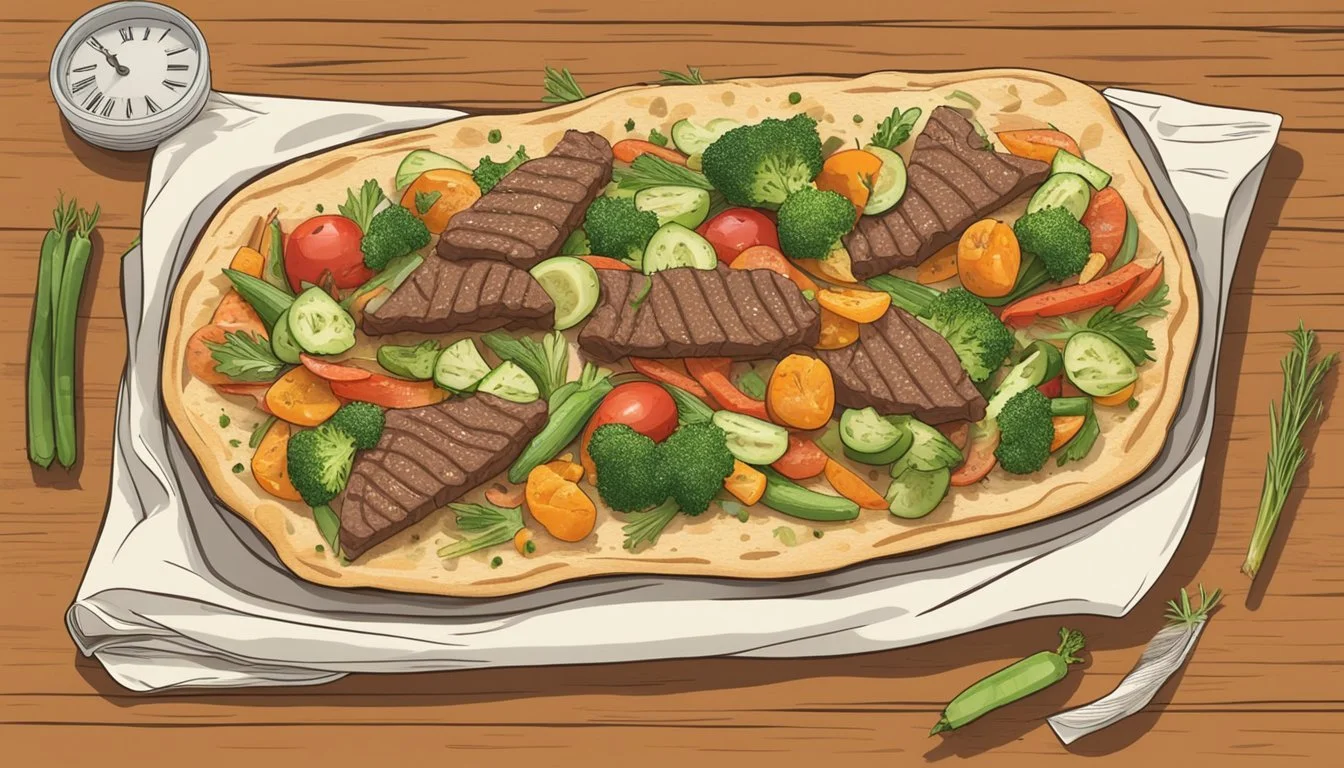How Long Does Beef and Vegetable Flatbread Last?
Storage Tips and Safety Guidelines
Beef and vegetable flatbreads, a delightful and versatile meal option, have a specific shelf life that ensures they remain tasty and safe to eat. Properly stored in the refrigerator, beef and vegetable flatbread can last for up to 3-4 days. This timeframe helps to maintain freshness and flavor while minimizing the risk of spoilage.
When preserving flatbread, the method of storage plays a crucial role. Placing the flatbread in an airtight container or wrapping it securely in plastic wrap can significantly extend its shelf life. For individuals looking to store it longer, freezing is an excellent option. Vacuum-sealed flatbreads can last in the freezer for up to 2-3 months.
Understanding the shelf life and storage techniques not only prevents food waste but also ensures every bite packed with deliciousness. In the following sections, the article will delve into practical tips for optimal storage and signs to look out for when the flatbread might no longer be safe to eat.
Understanding Beef and Vegetable Flatbread
Beef and vegetable flatbread combines savory minced meat with nutritious vegetables on a soft, versatile flatbread. This dish benefits from a rich mix of spices and herbs, enhancing its complex flavor and making it a favorite among food enthusiasts.
Ingredients and Composition
The primary ingredients include minced beef, assorted vegetables like corn and bell peppers, and the flatbread itself. The flatbread can vary between naan, tortillas, or pita, each adding unique textures. Common spices such as cumin, paprika, and cilantro are used, along with oil to sauté the ingredients. Herbs like mint and parsley often garnish the dish. The balance between meat and vegetables creates a nutritious and hearty meal.
Varieties of Flatbread
Different flatbreads affect both texture and flavor. Naan offers a soft, chewy base, ideal for soaking up juices from the beef and vegetables. Tortillas provide a thin, flexible option that can be easily wrapped around the filling. Pita bread, with its pocket-like structure, is excellent for stuffing with the seasoned mixture.
Each flatbread type lends itself to various regional influences, adding diversity to the dish. Choices in flatbread can significantly alter the eating experience, making it unique to individual preferences.
Storage Fundamentals
Properly storing beef and vegetable flatbread is crucial to extending its shelf life and maintaining its quality. Key factors include maintaining the right temperature, ensuring moisture levels, and using appropriate packaging methods.
Importance of Temperature
Temperature plays a vital role in the longevity of beef and vegetable flatbread. Storing at a cool temperature, specifically around 40°F (4°C), helps slow down the deterioration process.
Avoid placing the flatbread in areas of the fridge where temperature fluctuates, such as near the back or near cooling vents. Extreme temperatures can cause the bread to become stale or spoil quickly, reducing its shelf life. Keeping the fridge at a consistent, cool temperature is essential for preserving the freshness of the flatbread.
Moisture and Airtight Packaging
Moisture control is another critical element in flatbread storage. Too much moisture can lead to mold, while too little can make the bread dry and tough. Using airtight containers or wrapping the flatbread in foil or plastic wrap helps maintain the proper moisture balance.
Airtight packaging prevents direct exposure to air, which can cause the bread to dry out or absorb unwanted odors from other foods in the refrigerator. This type of packaging helps maintain the bread's original texture and flavor, ensuring it remains enjoyable to eat.
Refrigerator and Freezer Guidelines
For short-term storage, keep the flatbread in the refrigerator at a constant cool temperature to extend its freshness. Place the bread in an airtight container or wrap it in aluminum foil to prevent moisture loss and contamination.
For long-term storage, freezing the flatbread is an effective option. Freezing can extend the shelf life for several months. Ensure the flatbread is wrapped tightly with plastic wrap or placed in freezer-safe bags to prevent freezer burn. Label the packaging with the date to keep track of storage times and use within six months for the best quality.
Maximizing Freshness and Shelf Life
Maintaining the freshness and shelf life of beef and vegetable flatbread requires proper storage techniques and vigilance for signs of spoilage. This ensures food safety and optimal flavor.
Optimal Storage Methods
To extend the shelf life of beef and vegetable flatbread, refrigeration is essential. Store the flatbread in the refrigerator at 40°F (4°C) or lower. Air-tight containers or vacuum-sealed bags are ideal for preventing moisture loss and reducing bacterial growth.
For longer storage, freezing is effective. Wrap the flatbread in plastic wrap and place it in freezer-safe bags. This can preserve freshness for up to 3 months. Always label the storage bags with dates to track freshness.
Ensure minimal air exposure to prevent oxidation and maintain texture. Freezing at 0°F (-18°C) or lower halts bacterial growth. Use a consistent storage temperature to avoid compromising food safety.
Identifying Spoilage
Recognizing spoilage signs is critical to preventing foodborne illnesses. Spoilage indicators for beef include changes in color (grayish or greenish tint), texture (slimy or sticky), and odor (sour or off-putting smell). Vegetables in the flatbread may show signs of mold or discoloration.
Monitor for unusual moisture content and bubbles in the flatbread, as these can signal bacterial activity. Always trust your senses—if the flatbread smells or looks off, it is safer to discard it.
Regularly inspect stored foods and maintain cleanliness in your refrigerator and freezer. This prevents cross-contamination and ensures the long-term freshness of your beef and vegetable flatbread.
Food Safety Considerations
Ensuring the safety of beef and vegetable flatbread requires careful attention to how the food is prepared, stored, and handled. Proper storage and handling can prevent contamination and extend the longevity of the dish.
Preventing Foodborne Illness
Foodborne illness can occur if beef and vegetable flatbread is not stored and cooked correctly. Bacteria such as E. coli and Salmonella thrive in certain conditions. Beef should be cooked to an internal temperature of at least 160°F to kill harmful bacteria. Vegetables should also be washed thoroughly before cooking to avoid pesticides and contaminants.
Proper refrigeration is key. The flatbread should be stored at or below 40°F to inhibit bacterial growth. If not consumed within two hours of preparation, refrigerate the flatbread promptly to minimize the risk of foodborne illness.
Handling Leftovers
Leftovers should be stored in airtight containers to maintain freshness and prevent bacteria. Refrigerate leftover beef and vegetable flatbread within two hours of cooking, ensuring the fridge temperature is at or below 40°F. They can generally be kept for up to 3-4 days.
To reheat, ensure the flatbread reaches an internal temperature of 165°F to eliminate potential bacteria. Avoid reheating multiple times as this increases the risk of bacterial growth.
Freezing leftovers is an option for longer storage. Label containers with the date to monitor freshness, and use the flatbread within 2-3 months for optimal quality and safety. Always thaw frozen leftovers in the refrigerator, not at room temperature, to avoid bacterial growth.
Freezing and Thawing Techniques
Proper techniques for freezing and thawing can significantly extend the shelf life and maintain the quality of beef and vegetable flatbread.
Proper Freezing Practices
To maximize freshness and quality, freezing beef and vegetable flatbread should be done at 0°F (-18°C) or lower. It's vital to use airtight packaging to avoid freezer burn. Options include vacuum-sealing, airtight plastic wrap, or heavy-duty freezer bags. Label packages with the date to track storage time. For beef components, freezing time varies: ground beef should be stored for up to 3-4 months, while fresh cuts can last 8-12 months. Vegetable toppings generally last around 12 months if properly prepped and frozen at peak freshness.
Thawing Procedures
For best results, thawing frozen beef and vegetable flatbread should be done in the refrigerator. Plan ahead, as this can take several hours or overnight. If time is short, a cold-water bath can speed up the process, but ensure the package is airtight to prevent water from seeping in. Avoid thawing at room temperature to reduce the risk of bacterial growth. Microwave thawing can also be an option, but it may affect texture. Once thawed, cook or consume within a day for optimal flavor and safety.
Preparation and Cooking Tips
Proper preparation and precise cooking techniques can significantly enhance the taste and longevity of beef and vegetable flatbread. Consider cooking times, temperatures, and recipe versatility to achieve optimal results.
Cooking Time and Temperature
Flatbread cooking varies with oven settings. Thin flatbreads bake quickly, needing just 5–10 minutes at 450°F to 500°F. Thicker flatbreads may require more time to reach the desired crispness.
Ensure beef toppings, whether steak or ground meat, are pre-cooked to safe internal temperatures. For steaks, aim for an internal temp of at least 145°F, and for ground beef, a minimum of 160°F is recommended. Pre-cooking vegetables like bell peppers or onions until slightly tender can enhance flavor and texture.
Versatility in Recipes
Beef and vegetable flatbread offers a canvas for diverse culinary creations. Versatile in nature, these flatbreads can accommodate various toppings and flavor profiles. Use cooked beef slices, ground meat, or even roast vegetables for different textures and tastes.
Explore recipes incorporating a mix of cheeses, herbs, and spices to diversify flavors.
For a Mediterranean twist, consider topping with feta, olives, and oregano.
An American-style version might include melted cheddar, sautéed onions, and BBQ sauce.
Experiment with various vegetable combinations and beef preparations to keep your flatbread recipes exciting and diverse. The flexibility in toppings ensures every meal can be a unique culinary experience.
Identifying and Understanding Expiration
To determine how long beef and vegetable flatbread lasts, it's essential to grasp the significance of expiration dates and the differences between various labeling terms. The shelf life of ingredients like fresh beef is influenced by these dates and storage conditions.
Sell-By vs Use-By Dates
Sell-By Date: The sell-by date is primarily for retailers, indicating the last day the product can be sold. For beef and vegetable flatbread, fresh beef should be purchased before this date for maximum freshness. Retailers use this to manage inventory, but consumers can often safely consume the product a few days after this date if stored correctly.
Use-By Date: The use-by date specifies the last day the product is at its peak quality. This is crucial for raw beef used in the flatbread. After this date, the flavor, texture, and safety of the ingredients may degrade. Proper storage, such as refrigeration at the right temperature, extends usability but caution is advised.
Both dates help ensure consumers use products when they are at their best, maintaining food safety and quality.

